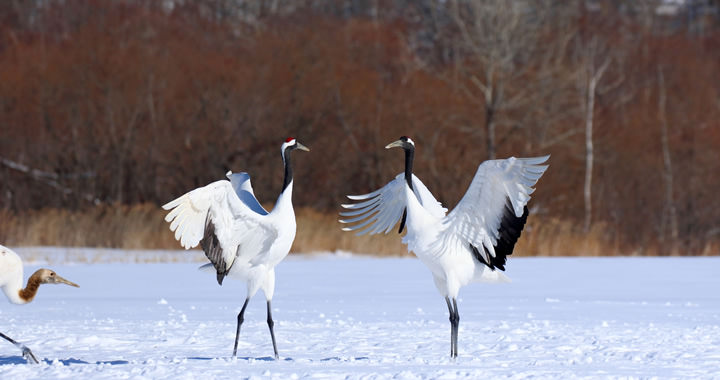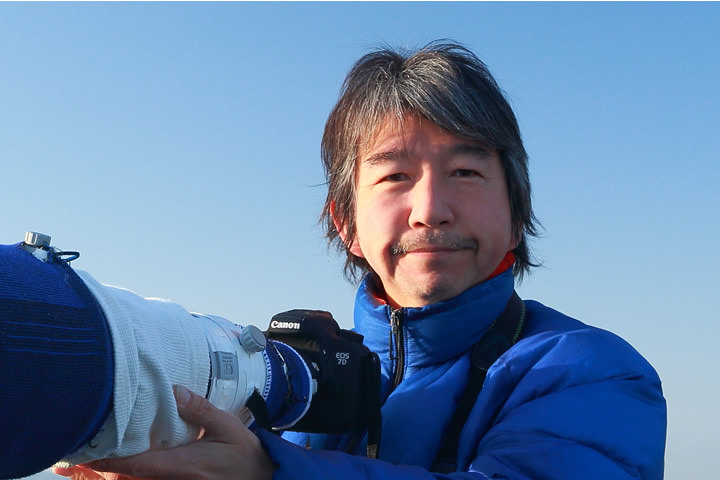how to
photograph
wild birds
Advanced Course
Learn about various shooting modes and the relationship between the aperture, shutter speed and brightness (exposure).

Advanced Course
Learn about various shooting modes and the relationship between the aperture, shutter speed and brightness (exposure).

Lesson 7
Advanced course
Birds move too quickly. I want to take photos that completely freeze their flapping wings and the splash of the water around them. Let's try to use the Tv mode!
Lesson 8
Advanced course
I want to blur the background so that birds eating in the bushes stand out. This can be achieved by changing to Av mode.
Lesson 9
Advanced course
I understand the settings of the Tv and Av modes, but my pictures come out dark or blurry. You can solve these problems by adjusting the image sensor's sensitivity to light.
Lesson 10
Advanced course
I tried taking various shots at different aperture (f/number) settings, shutter speeds and ISO speeds, but all the photos I took of a white bird against a cloudy sky came out looking gray. In that case, Let's use the exposure compensation function!
Lesson 11
Advanced course
Autofocus (AF) is a function that automatically adjusts the focus for you. Let's learn how and when to use One-Shot AF and AI Servo AF depending on the subject and their movements, which vary by species.
Lesson 12
Advanced course
There are two ways to focus on a subject: using the shutter button or the (AF start) button. Lets learn the differences and master back-button AF.
Lesson 13
Advanced course
Autofocus (AF) uses AF points and AF areas to acquire focus. Your camera lets you choose from a number of AF point and AF area patterns. Understanding the different patterns will bring you closer to getting the shots you want.
Lesson 14
Advanced course
In this lesson, we will learn about AF patterns ideal for locking on subjects with larger groups of AF points.
Wild bird photographer
My ultimate goal is to photograph not only in an attractive way, but also in a way that captures the essence and feeling of the animals. My current photographic subjects are wild birds and the natural environment.
His photography has been featured in several books, magazines, and TV commercials.

Naturally, bird photography exists because there are wild birds. No matter how advanced your camera is, if there are no birds to photograph then there is no purpose to it.
I started photographing wild birds when film was still in use and focusing was done manually. At that time, not only was the camera equipment expensive, processing the film was costly too, so I could not simply take every shot I wanted. As a result, I observed birds intently and focused on getting the perfect shot.
Times have changed, however. With the advancement of digital cameras and information technology, bird photography seems to now be dictated by the camera and information, so much so that somewhere along the way, birds have become simply another subject and not the main target, as if they are just one piece to complete a puzzle, so to speak.
In Japan, when a rarely seen bird is spotted, photographers often rush to the spot and occasionally cause problems with their behavior. It is not all bad though. By taking up bird photography as a hobby, many people have had their attention drawn to environmental issues, including those of wild birds. I think that doing as much as we can to pass on to future generations the joy of watching and photographing wild birds will also be good for the birds, and quite simply, the key to our coexistence.
People looking at a photograph know if it was taken through risky or inappropriate behavior. I think those kinds of photographs should not be rewarded at photo contests, but photographs of birds that make people feel good or show them living strong and healthy lives should be shared with as many people as possible. To the extent possible, wild birds should not be disturbed by our presence, and I strongly believe that the actions of even one person to show sensitivity, by not putting pressure on the birds, will spread to the photographers around them and lead to even better relationships with birds. This is my sincere wish. And, I would like to continue promoting the joy of bird photography for everyone.